
California’s Throwaway Kids
|
On a blistering May day in California’s Central Valley, most other 13-year-olds were in classrooms down the road. But Erick Araujo was under strict orders from his mother to stay inside with a U.S. history textbook.
Juvenile Justice Information Exchange (https://jjie.org/tag/education-2/page/5/)

On a blistering May day in California’s Central Valley, most other 13-year-olds were in classrooms down the road. But Erick Araujo was under strict orders from his mother to stay inside with a U.S. history textbook.
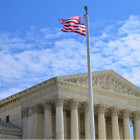
The Supreme Court issued its long-awaited ruling Monday in Fisher v. University of Texas, a case with broad implications on the use of affirmative action policies in college admissions processes. In a 7-1 ruling, the Supreme Court vacated and remanded an earlier Court of Appeals judgment after affirming the limited use of racially-based factors in university admissions. The case involves Abigail Fisher, a white Sugar Land, Texas, resident whose 2008, University of Texas application was rejected. Fisher, then a high school senior, later sued the university, claiming her application was denied because of the university’s use of affirmative action policies. Although the ruling says the policies must be strictly reviewed, the ruling does not forbid universities from using affirmative action policies.

In order for 18-year-old Ashley Carroll to turn her prison cell resolution into a reality she had the help of a transition program that helps children in the city’s juvenile system.
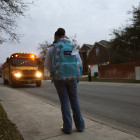
Amid a deepening debate over appropriate school discipline, board members of the nation's second largest school district — Los Angeles Unified — took bold steps this week sure to be noticed nationally.
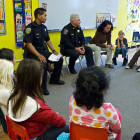
Journal article calls gun lobby plan 'superficially simple'
Originally published at The Center for Public Integrity
Two professors at Marshall University in West Virginia who are studying incarcerated school shooters and one professor at The Citadel, South Carolina’s military school, published their jointly written critique this month in the American Journal of Criminal Justice. The criminologists began their review last December after the NRA announced its “National School Shield” project in response to a gunman’s massacre of 20 first-graders and six educators in a Newtown, Conn. school. The NRA’s initial thrust was to urge schools to hire more police, but also persuade states to allow teachers or other willing staff or volunteers to carry arms. The NRA said it would provide training. In addition, the firearms association formed a task force to study schools’ vulnerabilities and make suggestions.
Photo by Frans Schouwenberg
From the Center for Public Integrity
The Obama administration wants stiffer gun control, and $150 million to help schools hire up to 1,000 more on-campus police or counselors, or purchase security technology. State legislators are considering shifting millions of dollars around to help schools hire more police. Some locals aren’t waiting: The 5,500-resident town of Jordan, Minn., has moved its entire eight-officer police force into schools. “The only way to stop a bad guy with a gun is with a good guy with a gun,” National Rifle Association Executive Vice President Wayne LaPierre said after a young man shot his way into his former grammar school on Dec. 14 in Newtown, Conn., and killed 20 first-graders and six educators.
On Tuesday, representatives from the Denver police department and public school system signed an intergovernmental agreement (IGA) significantly altering the roles of police officers in local schools. The new contract redefines student offenses, separating behaviors suited for in-school discipline from behaviors requiring police actions. The new model also urges de-escalation of conflicts on campus, as well as a greater focus on restorative justice policies. A teleconference featuring representatives from The Advancement Project and Padres and Jovenes Unidos was held the morning of the agreement’s signing. “Denver Public Schools and the Denver Police Department have moved into a new phase,” Judith Browne Dianis, The Advancement Project co-director, said.
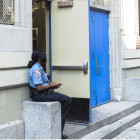
In the aftermath of the deadly shooting last month at Sandy Hook Elementary School in Newtown, Conn., intense public debate has focused on protecting students – and the role of student resource officers (SROs), in particular – in the event of future shooting sprees. Generally, school resource officers are local law enforcement officers appointed to patrol schools and handle juvenile disciplinary issues. The effectiveness of SROs is highly debated. A National Association of School Resource Officers (NASRO) report claims the presence of SROs has reduced juvenile arrests in some schools by nearly 50 percent. On the other hand, the Justice Policy Institute issued a report that found SROs had little effect on curbing criminal activity in schools, and may even lead to inflated, and potentially unnecessary, juvenile arrests.
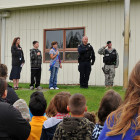
Youth advocates have worked to reduce police involvement in school discipline
The National Council of Juvenile and Family Court Judges is voicing concern over the push to put armed police or guards into American schools following the Newtown school massacre of 20 first-graders and six staff last December. On Tuesday, the Reno, Nev.-based group posted an excerpt of a letter sent to Vice President Biden, who has been leading a month-long effort to gather ideas for more effective gun restrictions and improved school safety. The White House is reportedly poised to reveal some recommendations Wednesday at a midday press conference. In its letter to Biden, the NCJFCJ expressed strong misgivings about the prospect of communities putting armed guards in schools – which could become even more likely if federal dollars are offered to help schools make that choice. Published reports indicated Biden’s task force was considering such a plan, which has also been pushed by Sen. Barbara Boxer, a liberal Democrat from California.

The number of young people arrested in Florida’s public schools decreased by 48 percent from 2004 to 2012, according to a new Florida Department of Juvenile Justice report. Over the eight-year period, total public school arrests in the state fell from 24,000 to about 12,500 during the 2011-2012 school year. According to the report, 67 percent of all school-related arrests during the timeframe stemmed from misdemeanor offenses, with non-felony assault and battery, disorderly conduct and drug charges accounting for almost 56 percent of public school arrests over the eight-year period. Additionally, 51 percent of school-related arrests last year were attributed to first-time delinquents, a 7 percent drop from 2010-2011 statistics. In all, 65 percent of school-related arrests in the 2011-2012 school year in Florida were dismissed, not filed or eventually dismissed.